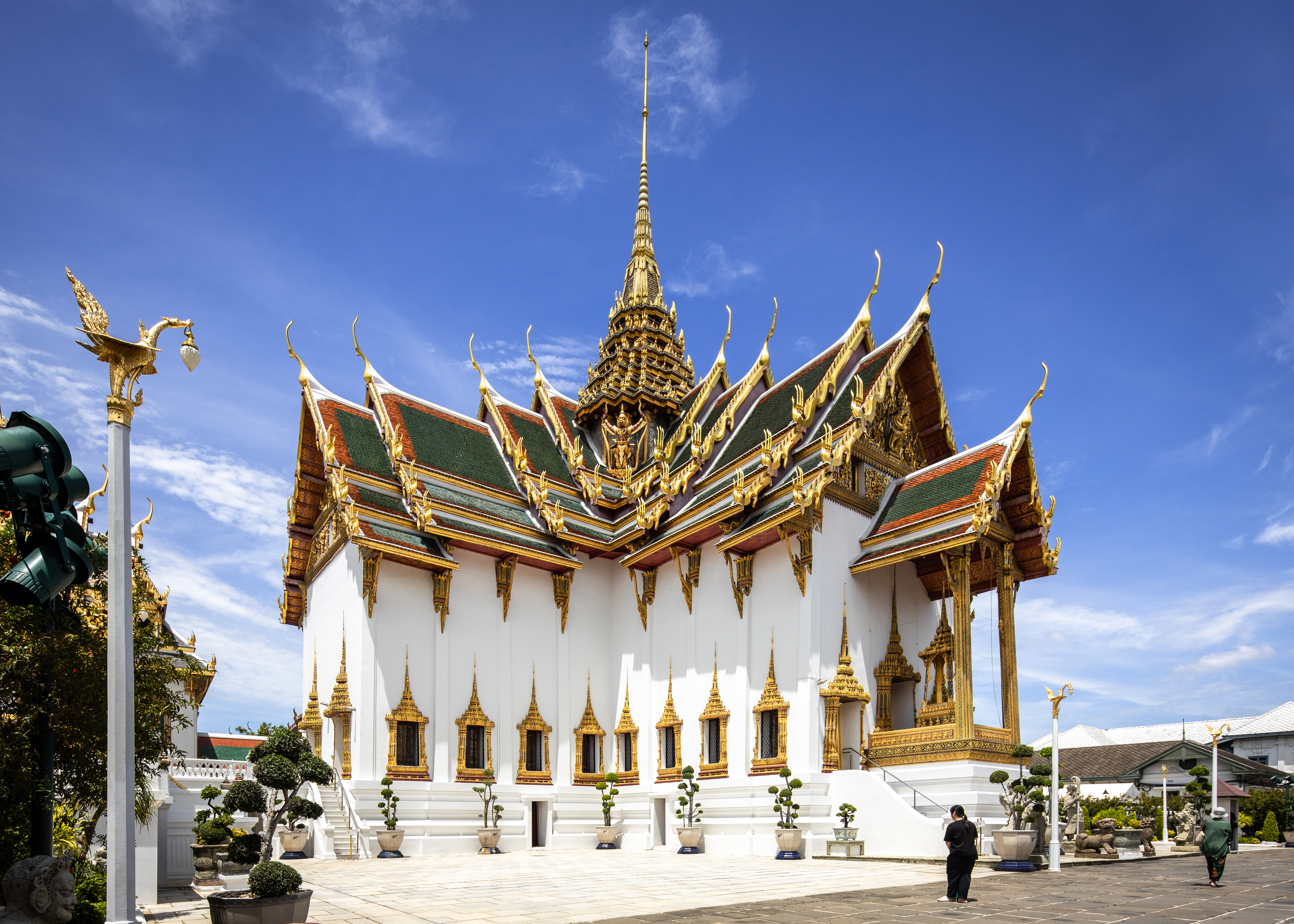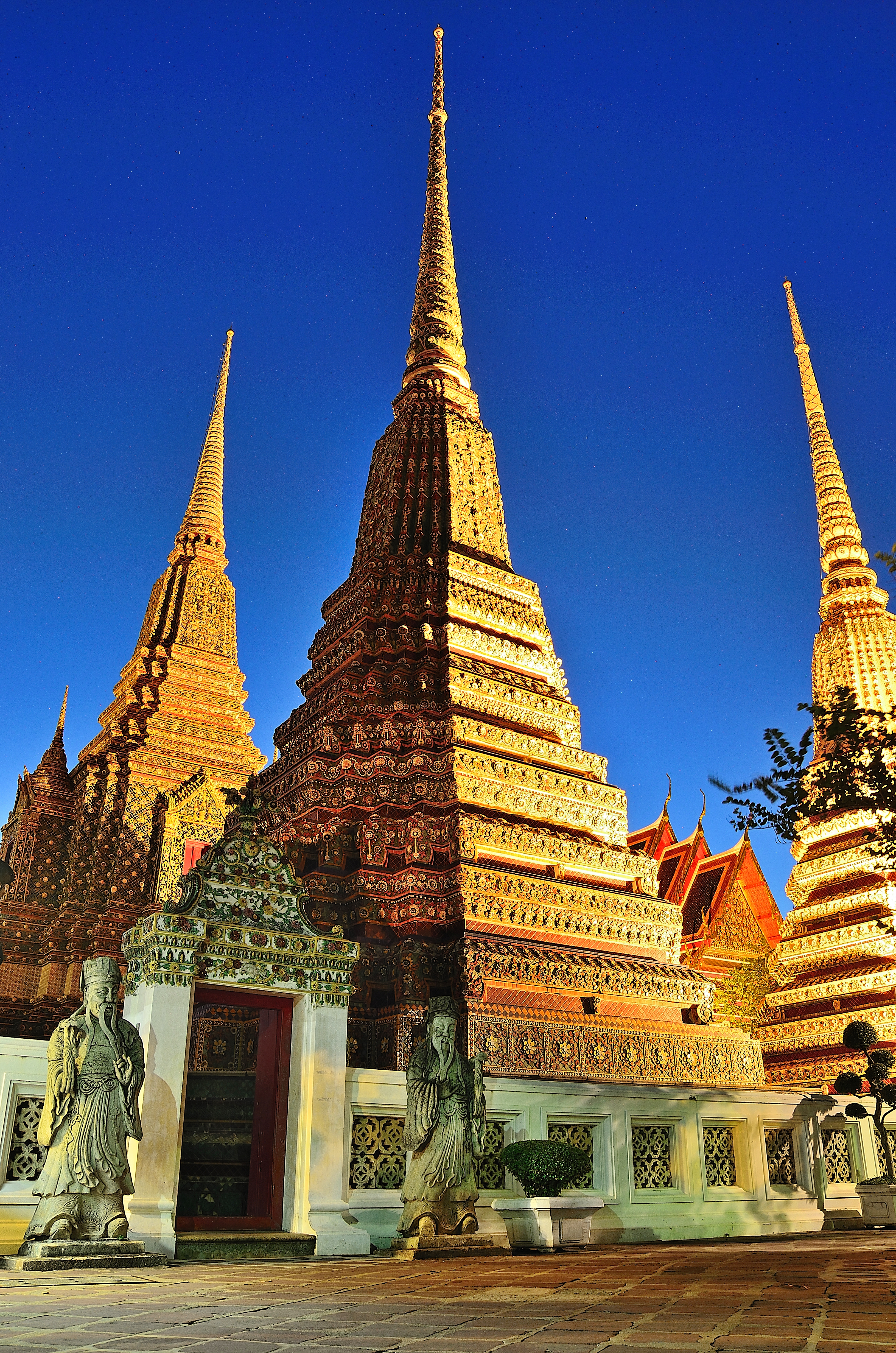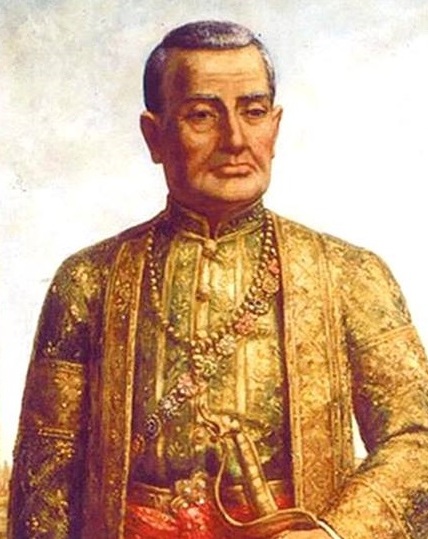|
Prasat (Thai Architecture)
A ''prasat'' (, from Sanskrit: ), or more accurately, ''kudakhan'' (, from Pali/Sanskrit: ) or ''rueanyot'' (), is a Thai architecture, Thai architectural form reserved for royal palaces of the monarch or for sacred religious structures. It is a building featuring an ornate roof structure, usually multi-tiered, with one or more spires. The form symbolizes the centre of the universe, which is traditionally associated with the monarch or the Buddha. ''Prasat'' forms are widely used in the buildings of the Grand Palace, and are also found in some Buddhist temples (''wat'') and in the architecture of the temporary crematoria used for Thai royal funeral, royal funerals. Architectural historians have classified ''kudakhan'' into several categories, according to the shape of the spire: ''mondop''-shaped, ''prang (architecture), prang''-shaped, ''mongkut (crown), mongkut''-shaped, and others (including stupa-shaped and ''phra kiao''–shaped, depending on the author). Gallery ''Mondop''-sh ... [...More Info...] [...Related Items...] OR: [Wikipedia] [Google] [Baidu] |
Dusit Maha Prasat 06
Dusit () is the Thai name for Tushita, the fourth heavenly realm in Buddhist cosmology. The name may refer to: *Dusit District, a district of Bangkok *Dusit Palace, namesake of the district *Dusit Subdistrict, Bangkok, in Dusit District *Dusit Subdistrict, Nakhon Si Thammarat, in Tham Phannara District *Dusit International, a Thai hospitality company *Suan Dusit University, sometimes shortened as Dusit, formerly known as Suan Dusit Rajabhat University and part of the Rajabhat University system *Chut Thai Dusit, a dress style of the formal Thai national costume See also *Dusit (name) *Dusit Thani (other) {{Disambiguation ... [...More Info...] [...Related Items...] OR: [Wikipedia] [Google] [Baidu] |
Dusit Palace
Dusit Palace (, RTGS: ''Phra Ratcha Wang Dusit'') is a compound of royal residences in Bangkok, Thailand. Constructed over a large area north of Rattanakosin Island between 1897 and 1901 by King Chulalongkorn (Rama V). The palace, originally called ''Wang Suan Dusit'' or 'Dusit Garden Palace' (วังสวนดุสิต), eventually became the primary (but not official) place of residence of the King of Thailand, including King Chulalongkorn (Rama V), King Vajiravudh (Rama VI), King Prajadhipok (Rama VII), King Bhumibol Adulyadej (Rama IX) and King Vajiralongkorn (Rama X). The palace covers an area of over and is dotted between gardens and lawns with 13 different royal residences. Dusit Palace is bordered by Ratchwithi Road in the north, Sri Ayutthaya Road in the south, Ratchasima Road in the west and U-Thong Nai Road on the east. History Background Since 1782 and the foundation of Bangkok as the capital city of the Kingdom of Siam, the monarchs of the Chakri dynasty ... [...More Info...] [...Related Items...] OR: [Wikipedia] [Google] [Baidu] |
Pyatthat
Pyatthat (, ; from Sanskrit ; ; also spelt pyathat) is the name of a multistaged roof, with an odd number of tiers (from three to seven). The pyatthat is commonly incorporated into Burmese Buddhist and royal architecture (e.g., kyaungs, palace buildings, pagodas) and towers above the image of the Buddha or other sacred places (e.g., royal thrones and city gates). Construction The pyatthat is made of successive gabled rectangular roofs in an exaggerated pyramidal shape, with an intervening box-like structure called the ''lebaw'' () between each roof. The pyatthat is crowned with a wooden spire called the ''taing bu'' () or ''kun bu'' () depending on its shape, similar to the hti, an umbrella ornament that crowns Burmese pagodas. The edges of each tier are gold-gilded decorative designs made of metal sheet, with decorative ornaments called ''du yin'' () at the corners (analogous to the Thai ''chofah''). There are three primary kinds of pyatthat, with the variation being the numb ... [...More Info...] [...Related Items...] OR: [Wikipedia] [Google] [Baidu] |
Wat Pho
Wat Pho (, ), also spelled Wat Po, is a Buddhism, Buddhist temple complex in the Phra Nakhon, Phra Nakhon District, Bangkok, Thailand. It is on Rattanakosin Island, directly south of the Grand Palace, Bangkok, Grand Palace. Known also as the Temple of the Reclining Buddha, its official name is Wat Phra Chetuphon Wimon Mangkhalaram Rajwaramahawihan (; ). The more commonly known name, Wat Pho, is a contraction of its older name, ''Wat Photaram'' (; ). The temple is first on the list of six temples in Thailand classed as the highest grade of the first-class royal temples. It is associated with King Rama I who rebuilt the temple complex on an earlier temple site. It became his main temple and is where some of his ashes are enshrined. The temple was later expanded and extensively renovated by Rama III. The temple complex houses the largest collection of Buddha images in Thailand, including a 46 m long huge reclining Buddha. The temple is considered the earliest centre for public educat ... [...More Info...] [...Related Items...] OR: [Wikipedia] [Google] [Baidu] |
Wat Phichayayatikaram
Wat Phichaya Yatikaram Worawihan, also referred to as Wat Phichai Yat () is a Thai Buddhist temple in Bangkok, regarded as one of the most beautiful and outstanding temples of Bangkok and Thonburi side. The temple is located by the waterside of Khlong Somdet Chao Phraya in Khlong San District near present Wongwian Lek. Wat Phichai Yat was registered to a national ancient monument by the Fine Arts Department in the year 1949. Gallery file:Inside Wat Phichaiyatikaram Templebangkok.jpg, The temple and white stūpas file:Wat Phichaiyatikaram,Bangkok.jpg, Aerial view by nighttime file:Pra Sitharod.jpg, Phra Sittharot file:วัดพิชยญาติการามวรวิหาร.JPG, Monument of Somdet Chao Phraya Borom Maha Phichai Yat the restorer file:Watpichayart.jpg, The ''Prang Prang may refer to: Places * Prang, Khyber Pakhtunkhwa, a town of Charsadda District, Khyber Pakhtunkhwa province, Pakistan * Prang Besar, an old name for Putrajaya, Kuala Lumpur, Ma ... [...More Info...] [...Related Items...] OR: [Wikipedia] [Google] [Baidu] |
Wat Phra Kaew
Wat Phra Kaew (, , ), commonly known in English as the Temple of the Emerald Buddha and officially as Wat Phra Si Rattana Satsadaram, is regarded as the most sacred Wat, Buddhist temple in Thailand. The complex consists of a number of buildings within the precincts of the Grand Palace in the historical centre of Bangkok. It houses the statue of the Emerald Buddha, which is venerated as the country's Palladium (protective image), palladium. Construction of the temple began in 1783 under the orders of Rama I, the first king of the Chakri dynasty. Since then, each successive king has been personally involved in adding, restoring and embellishing the temple during their reigns as a way of making Merit (Buddhism), religious merit and glorifying the dynasty. Many important state and royal ceremonies are held within the temple each year, presided by King of Thailand, the king in person and attended by government officials. This makes the temple the nation's preeminent place of worship ... [...More Info...] [...Related Items...] OR: [Wikipedia] [Google] [Baidu] |
Wat Ratchanatdaram
Wat Ratchanatdaram (, ) is a Buddhist temple (wat) located at the intersection between Ratchadamnoen Klang and Maha Chai Road, in Phra Nakhon district, Bangkok. Meaning ''Temple of the Royal Niece'', the temple was built to the order of King Nangklao (Rama III) for his granddaughter, Princess Somanass Waddhanawathy in 1846. It is popularly known as ''Loha Prasat'', literally meaning the iron palace. Etymology The name ''loha prasat'', literally means ''metal castle''. The 37 spires of the temple have a metallic finish giving the entire structure a metal like look and hence the name. The 37 spires represent the 37 Bodhipakkhiya Dharma in Buddhism. History Although the structure was conceived in 1846 during the reign of King (Rama III) it was not completed during his reign. Several attempts were made by King Rama III's successor to complete it but it was only in 1960, under Rama IX, that construction was restarted. It was supervised by the Fine Arts Department of Thailand. In ... [...More Info...] [...Related Items...] OR: [Wikipedia] [Google] [Baidu] |
Bang Pa-in Palace
Bang Pa-In Royal Palace (), also known as the Summer Palace, is a palace complex formerly used by the Thai kings. It lies beside the Chao Phraya River in Bang Pa-in District, Phra Nakhon Si Ayutthaya Province in Thailand. History King Prasat Thong constructed the original complexRajanubhab, D., 2001, Our Wars With the Burmese, Bangkok: White Lotus Co. Ltd., in 1632, but it fell into disuse and became overgrown in the late 18th and early 19th centuries, until King Mongkut began to restore the site in the mid-19th century. Most of the present buildings were constructed between 1872 and 1889 by King Chulalongkorn. Buildings Amidst vast gardens and landscaping stand the following buildings: Wehart Chamrun (Heavenly Light), a Chinese-style royal palace and throne room; the Warophat Phiman (Excellent and Shining Heavenly Abode), a royal residence; Ho Withun Thasana (Sages' Lookout), a brightly painted lookout tower; and the Aisawan Thiphya-Art (Divine Seat of Personal Freedom), a ... [...More Info...] [...Related Items...] OR: [Wikipedia] [Google] [Baidu] |
Thai Architecture
The architecture of Thailand () is a major part of the country's cultural legacy and reflects both the challenges of living in Thailand's sometimes extreme climate as well as, historically, the importance of architecture to the Thai people's sense of community and religious beliefs. Influenced by the architectural traditions of many of Thailand's cultures, it has also developed significant regional variation within its vernacular and religious buildings. Although Siam urged to identify themselves as a modernized state, Western culture and influence was undesirable and inevitable. In an attempt to become distinguished, Thailand's ruling elite gravitated toward selective Modernization to avoid the undesired Western influence. History Dvaravati era (7th–11th century CE) The architecture of Dvaravati appears in the central region of Thailand. It used clay bricks and sometimes laterite. The construction of pagodas had a square base and an inverted-bell shape topped with a spire. ... [...More Info...] [...Related Items...] OR: [Wikipedia] [Google] [Baidu] |
Mongkut (crown)
Mongkut (18 October 18041 October 1868) was the fourth king of Siam from the Chakri dynasty, titled Rama IV. He reigned from 1851 until his death in 1868. The reign of Mongkut was marked by significant modernization initiatives and diplomatic engagements, which played pivotal roles in shaping Thailand's trajectory towards progress and international relations. Siam first felt the pressure of Western expansionism during Mongkut's reign. Mongkut embraced Western innovations and initiated the modernization of his country, both in technology and culture—earning him the nickname "The Father of Science and Technology" in Siam. Mongkut was also known for appointing his younger brother, Prince Chutamani, as Second King, crowned in 1851 as King Pinklao. Mongkut told the country that Pinklao should be respected with equal honor to himself (as King Naresuan had done with his brother Ekathotsarot in 1583). During Mongkut's reign, the power of the House of Bunnag reached its zenith: It ... [...More Info...] [...Related Items...] OR: [Wikipedia] [Google] [Baidu] |





